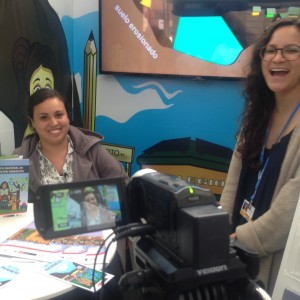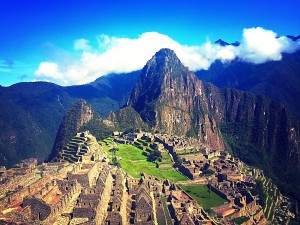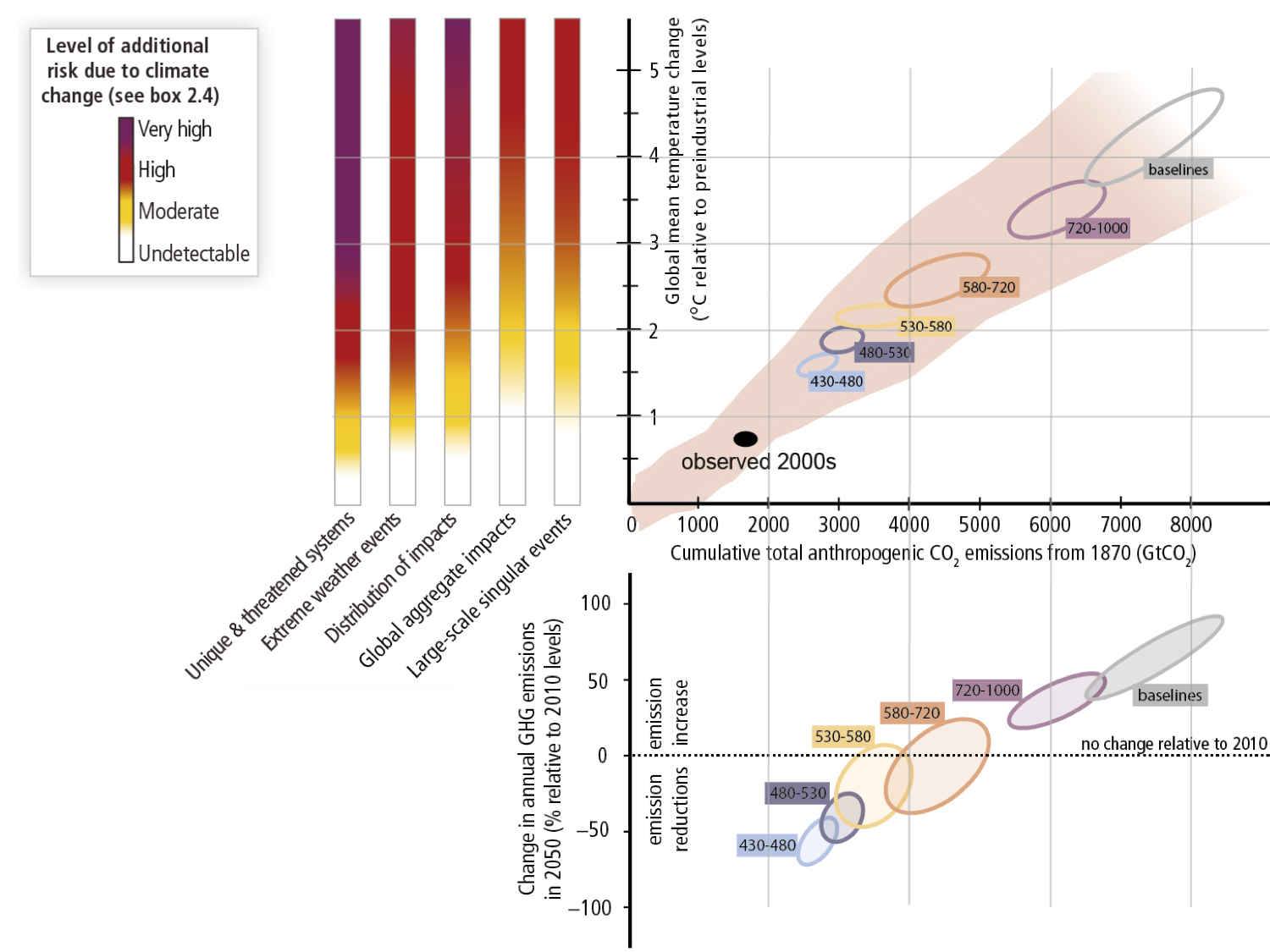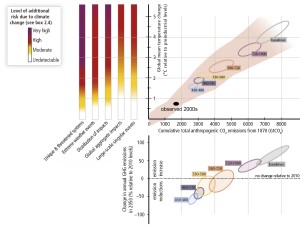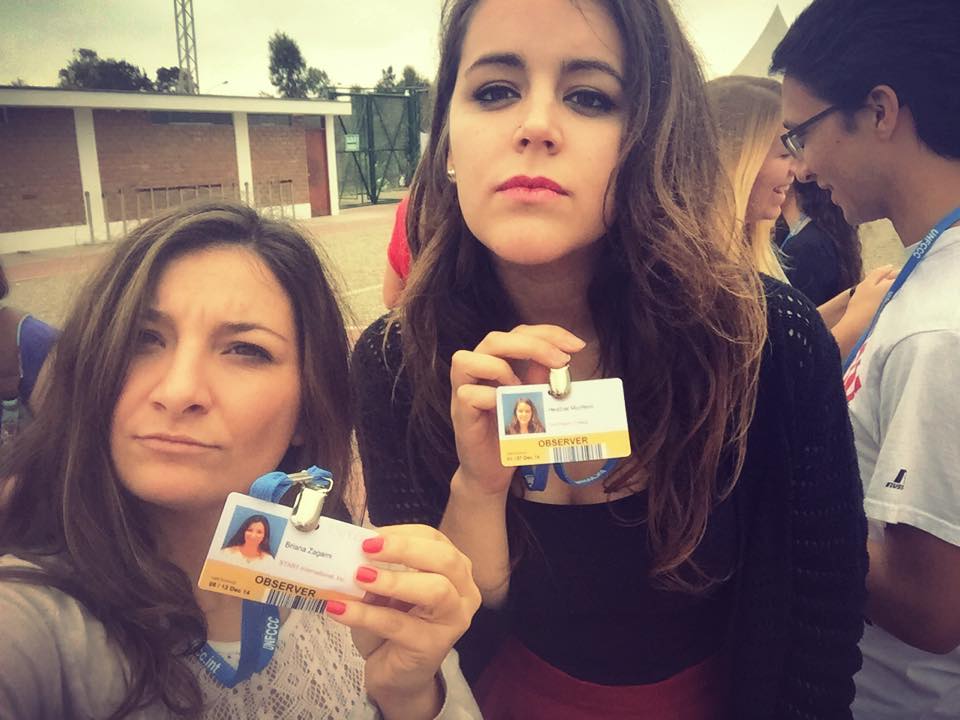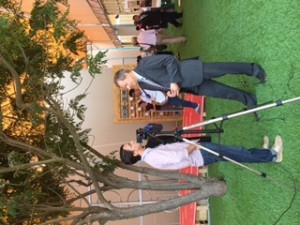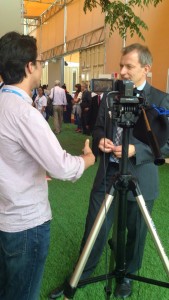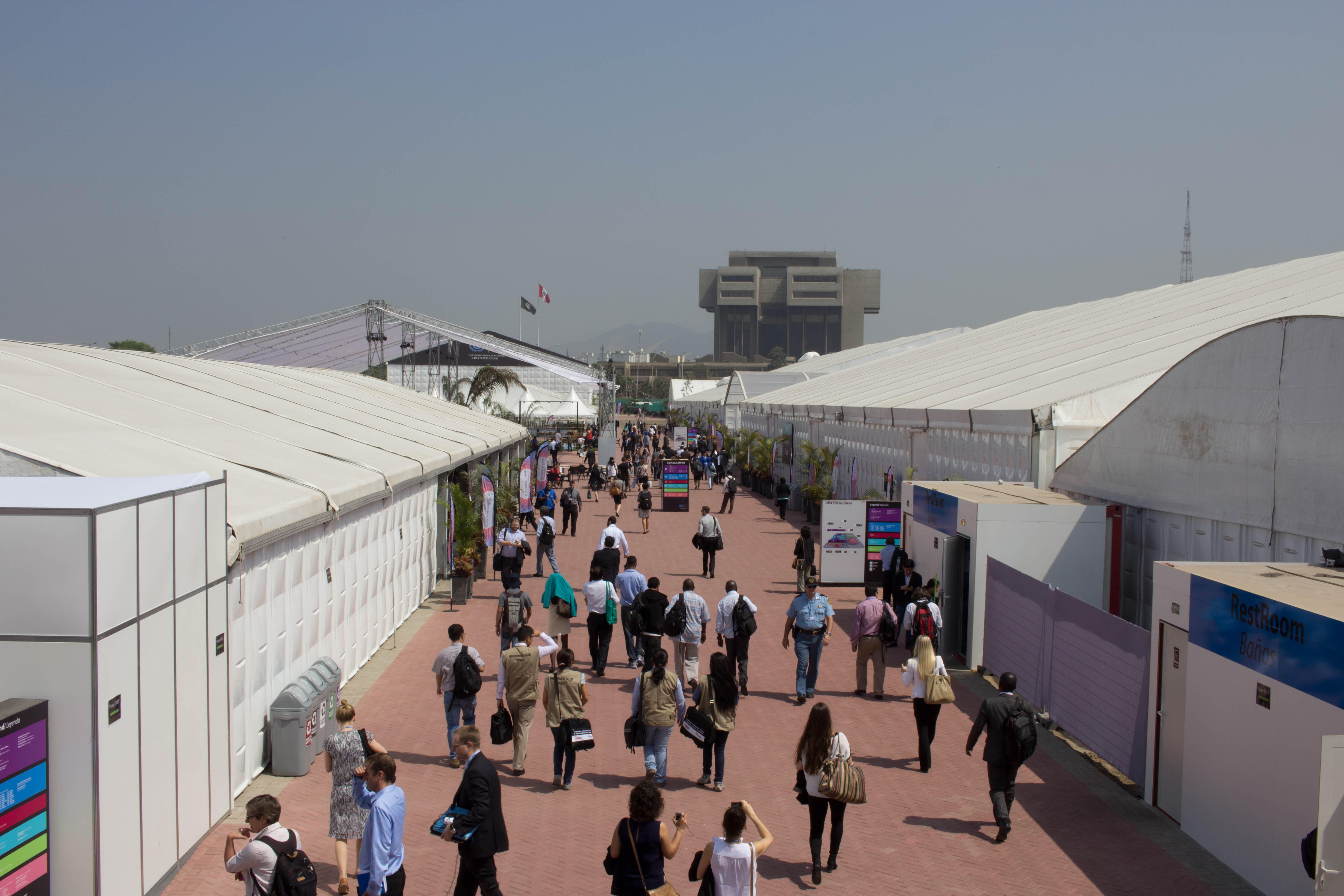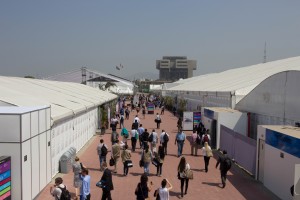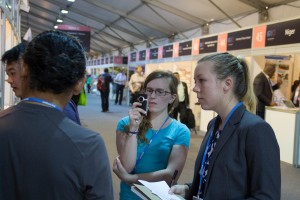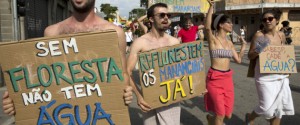On Wednesday December 10, 2014, I attended and marched in the Marcha Mundial en Defensa de la Madre Tierra in Lima, Peru, put on by the Cumbre de los Pueblos. I got a taxi from my hostel with two other members of the mosaic crew, and we took it to the Campo de Marte at the intersection of the Avenue de la Peruanidad and the Avenue Salaverry. The march seemed to have a good amount of people at this point, but it didn’t seem as big as we had expected. But the marching didn’t actually start until 11 AM, we were just gathering in the park at this point. We left to get some bananas for breakfast, and when we got back, it seemed a bit larger of a crowd had gathered.
My other two companions had to leave at this point to go to the COP, so I was left alone. I walked around for a bit and got handed a bunch of pamphlets and stickers and pins and was asked to sign a few petitions. I was also handed a sign that consisted of a big green heart with “100% energia limpia” written on it (it wasn’t until a few hours after the march that I found out what this meant—100% clean energy). I would carry this sign for the whole march.
At one point the energy seemed to really start to come to a head and there was a bunch of performance art and drumming and traditional music and chanting being done, although at this point I couldn’t tell if the march had begun yet or not. But the energy was absolutely intoxicating. We had by this point blocked off all the traffic in the Campo de Marte traffic circle, and police had to direct traffic. I walked around in the middle of the street for a while checking out all of the different groups of protesters. It seemed that the march was split up into blocks of different groups, separated by large signs telling what their purpose for marching was (I think, it was all in Spanish, which I don’t speak). There was no block for people with big green heart signs so I walked around and checked out a bunch of different groups, one of which was a bunch of women banging on cans and chanting something. I tried to chant with them, but the language barrier made this impossible. I kept walking through the crowd until I realized that I was now standing in a line with a bunch of people with bandanas tied around their mouths and heads. This was the “Bloque Hip Hop.” I stood in their lines for a while, but I felt very out of place there as they seemed a little too militant with their bandanas and their anti-capitalism signs for my green heart. Also, based on the amount of daps that were given, it seemed that they all knew each other pretty well. So I left their crowd.
The slogan of the march was “Change the system, not the climate,” meaning that this protest was meant to challenge the current manner of dealing with climate change, and try to change that. In fact, this I believe was the whole purpose of the People’s Summit—to offer alternatives to current negotiating systems. There were definitely enough people there to help out challenging the current system. By the time the marching began, I couldn’t see where the end of the crowd was.
As we began marching, I again joined in with the women banging on cans, mostly because they seemed nice and there were others with big green hearts in their crowd. The march was a lot of fun. We marched for about 2 hours (?) through the neighborhood of La Victoria (?) taking over highways and other streets. It was a lot of fun seeing how we were blocking off traffic, although the cars weren’t having that much fun. I almost got run over a few times by angry drivers.
I attempted to chant along with people, but it was all in vain—I couldn’t understand the Spanish. Occasionally I would yell the Spanish words I could make out, like “porque” or “clima,” but overall it was hard for me to chant in Spanish.
Every so often people would start yelling and running forwards which was fun. I also tried to check out a bunch of different groups in the march and not hang around the same people the whole time. There was a group with orange flags that said “PCP” on them. I have no idea what this meant. There was another group with green flags that said “CCP, ” The FENAOMP group, the CGTP group, and at the very front of the march were a bunch of people holding a huge green tarp with something I couldn’t make out written on it. And of course there were the women dressed in purple and the Bloque de Hip Hop, among other groups that I can’t remember.
As I said, we marched about 2 hours through the streets of Lima, sometimes on larger two lanes roads and sometimes on smaller city streets where we walked alongside residents of Lima not participating in the march. The march ended in a big circle I don’t know where. The whole circle seemed to be a big party. There was one person making a speech on a truck in Spanish to a substantial crowd, a few different bands playing, people burning coca leaves and making speeches, and people hanging around the park making demonstrations or just hanging out on the grass. The whole scene was pretty fun, although I decided to leave as I didn’t know anyone and couldn’t understand anything as it was all in Spanish. Getting out was hell, because the march had screwed up all of the traffic patterns and the roads were blocked up for as far as I could see. I had five taxis reject me until I finally found one that would take me back to Miraflores. All in all though, a really great experience, and I got a big heart sign from it, which, sadly, had to be cut up so that it could fit in my suitcase to go back home.

